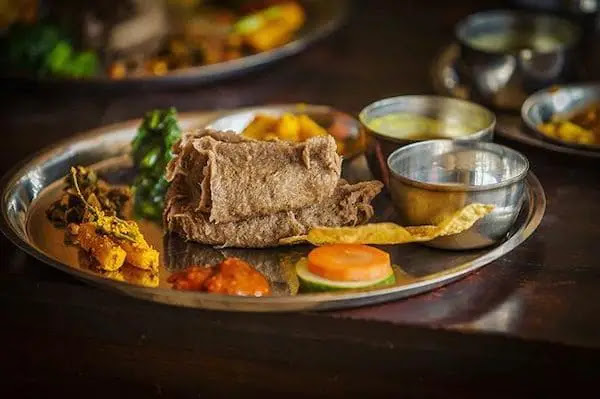Nepali cuisine is known for its diverse array of flavors and traditional dishes. Among the many culinary treasures of Nepal, Dhido stands out as a staple food that holds a special place in the hearts and palates of Nepali people. This article explores the origins, preparation, and significance of Dhido, a traditional Nepali cornmeal dish that offers a unique and satisfying dining experience.
Origins and Cultural Significance:
Dhido has been a part of Nepali culinary culture for
centuries, particularly in rural areas where corn is abundant. It is believed
to have originated from the indigenous communities living in the hilly regions
of Nepal. Traditionally, Dhido was considered a simple and nutritious meal that
provided sustenance to farmers and laborers during long working days. Today, it
has become a beloved dish enjoyed by people from all walks of life.
Preparation and Ingredients:
Dhido is made by cooking cornmeal with water to form a
thick, smooth, and dough-like consistency. The process involves continuous
stirring to prevent lumps from forming. The cornmeal used in Dhido is typically
coarse and made from dried corn kernels. This gives the dish a distinct texture
and flavor. Some variations of Dhido incorporate other grains such as buckwheat
or millet, adding depth to the dish.
Cooking Techniques and Serving Styles:
To prepare Dhido, the cornmeal is gradually added to boiling
water while stirring vigorously. The mixture is cooked until it thickens and
reaches a dough-like consistency. The cooked Dhido is then portioned into
individual servings or served in a communal dish. Traditionally, Dhido is eaten
with hands, where small portions are rolled into balls and dipped into
accompanying side dishes or curries.
Accompaniments and Variations:
Dhido is often paired with various side dishes or curries,
enhancing its taste and nutritional value. Gundruk (fermented leafy greens),
Sisnu (nettle soup), pickles, curried vegetables, or meat dishes like sukuti
(dried meat) are popular accompaniments to Dhido. The combination of the soft,
warm Dhido with the flavors and textures of these side dishes creates a
satisfying and balanced meal.
Significance in Nepali Culture:
Dhido holds cultural significance in Nepali society as it
represents simplicity, sustenance, and the spirit of community dining. It is a
symbol of togetherness, often enjoyed during festive occasions, family
gatherings, and celebrations. Sharing a plate of Dhido fosters a sense of unity
and kinship among those partaking in the meal.
Health Benefits:
Dhido is not only a delicious dish but also a nutritious
one. Cornmeal, the main ingredient in Dhido, is rich in fiber, vitamins, and
minerals. It provides energy, aids digestion, and contributes to overall
well-being. Furthermore, Dhido is gluten-free, making it a suitable option for
individuals with gluten sensitivities or those following a gluten-free diet.
Conclusion:
Dhido holds a special place in Nepali cuisine, representing
tradition, simplicity, and community. This traditional cornmeal dish offers a
unique culinary experience with its distinctive texture, comforting flavors,
and versatility. Whether enjoyed with curries, vegetables, or other side
dishes, Dhido showcases the richness and diversity of Nepali flavors. For those
seeking an authentic taste of Nepal, Dhido is a must-try dish that embodies the
spirit of Nepali culture and the warmth of its people.
